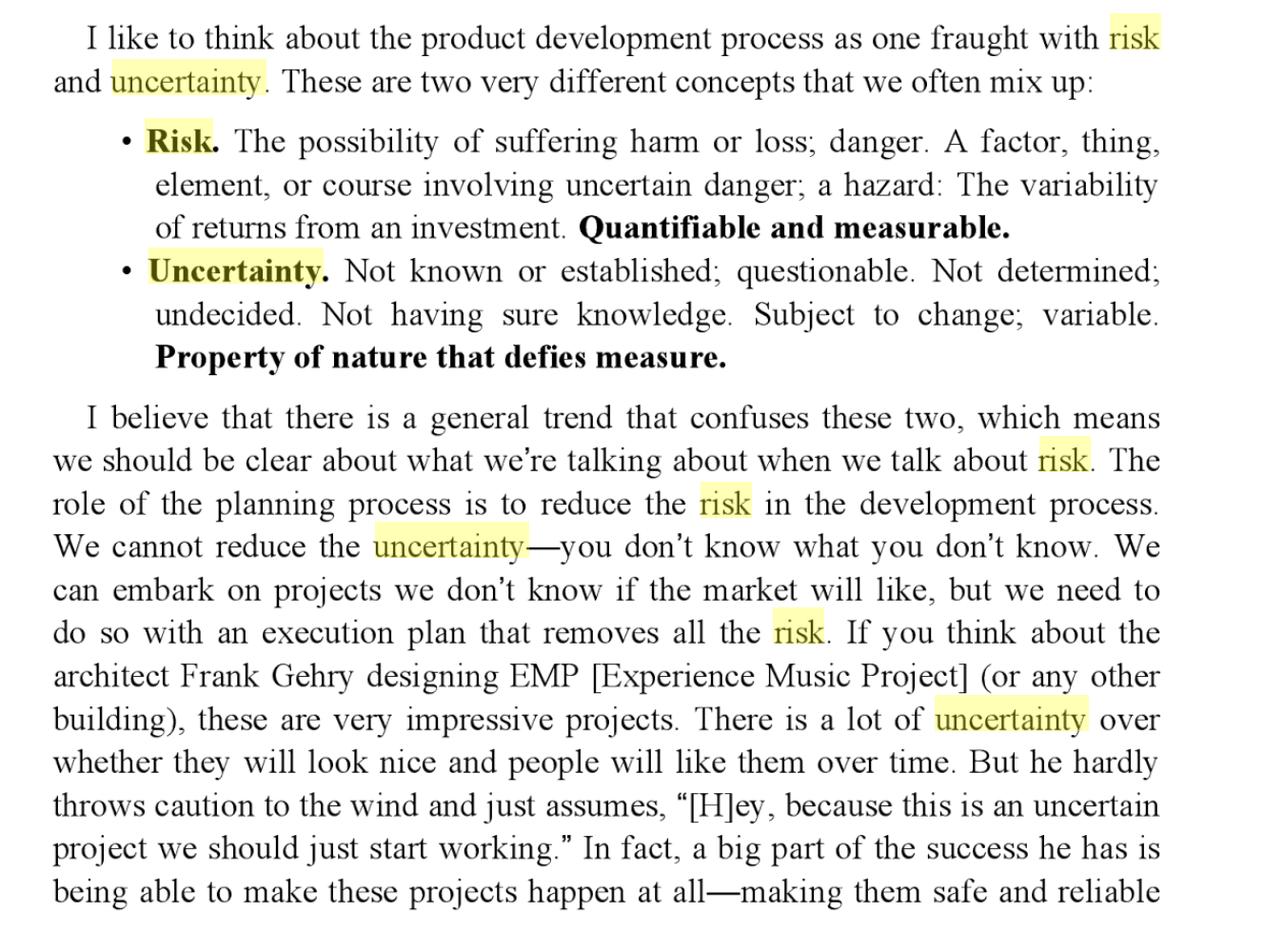Today I finally finished reading One Strategy: Organisation, Planning, and Decision Making by Steven Sinofsky and Marco Iansiti. I checked my email to see when I started reading it. Amazon tells me it was delivered on or around December 21st 2016. It’s very rare for me to spend just over a year reading a book. I usually finish them quickly or abandon them, but I pushed through on this one.
If you’re an engineering or product manager this book is a must read. Format wise the book is a bunch of internal blog posts Steven Sinofsky wrote at Microsoft in the process of building Windows 7 interspersed with some of the most turgid, business-jargon filler content I’ve had the misfortune to cast my eyes over. In the end, I made it through the book only by skimming over all the non-blog content, which is conveniently in a different typeface.
I know that took a savage turn there, but I just wanted to strongly disclaim the writing style before I spend the rest of this post telling you how good this book is. It’s a high value read but it’s hard work.
This book is so valuable because it’s primarily composed of the real work artefacts of a real manager on a real product. So much management writing is second hard, or overly abstract, or both. As a manager, so much of what we do is personally or strategically sensitive and very hard to share without surrounding context.
As an engineer I grew accustomed to being able to read and share real work artefacts, from production code that had been open sourced or smaller samples quickly anonymised. Reading real code written under real constraints is often more useful than perfect, hypothetical textbook code. This book is like reading management source code. The writing in his posts is clear, but obviously written under time pressure. It sets a realistic standard of internal leadership writing to aspire to.
It also, like all good shared source code, has some really helpful stuff to copy and paste to solve the problem right in front of you. We’ve got a really exciting year ahead at 99designs. We’re undertaking a big shift in our product and while we’re at it we’re also making some pretty big tech changes. I was really struggling to find a framework to explain why I thought it was sensible for us to do both at the same time. I flick through the book a bit, and oh look, here’s something fit for purpose:

Needless to say, I whacked that screenshot into my 2018 Strategy doc and moved on with my life.
There are posts in there that explain:
- why some projects get funded and some don’t and that’s OK
- how to blend top-down and bottom-up input in a planning process
- why plans are valuable and you can’t just start coding
- why middle managers exist and are not all bad
- how to plan out your career path
- breaking out of the features/quality/time horse trading game
- the challenges of the partner/OEM business model
- how to run a good 1:1 meeting
- …plus plenty of other things
Not all of them make amazing or industry changing points, but they’re great examples of how to broadcast a line of thinking in order to drive alignment. More than one will have a line or two that essentially say “you don’t have to agree, you can go do something else, but if you’re here do this.”
When you do read it, I don’t recommend completely skipping the non-blog parts of the book. There is some valuable organisational context in there that will aid your read though. Those bits are at their weakest when they try and tie the post towards some broader trends outside of the context that generated them.
If you have ever needed to broadcast information across some or all of a company about technical or product details, this book will be of great use to you and worth the time and effort to read.
